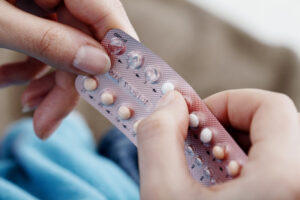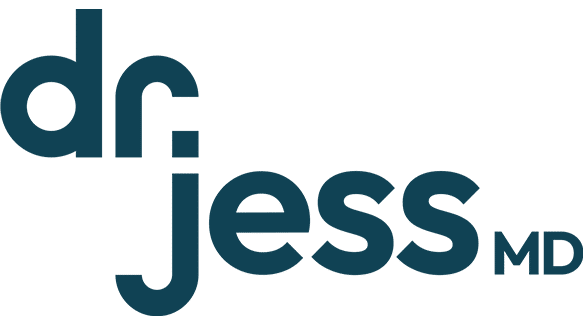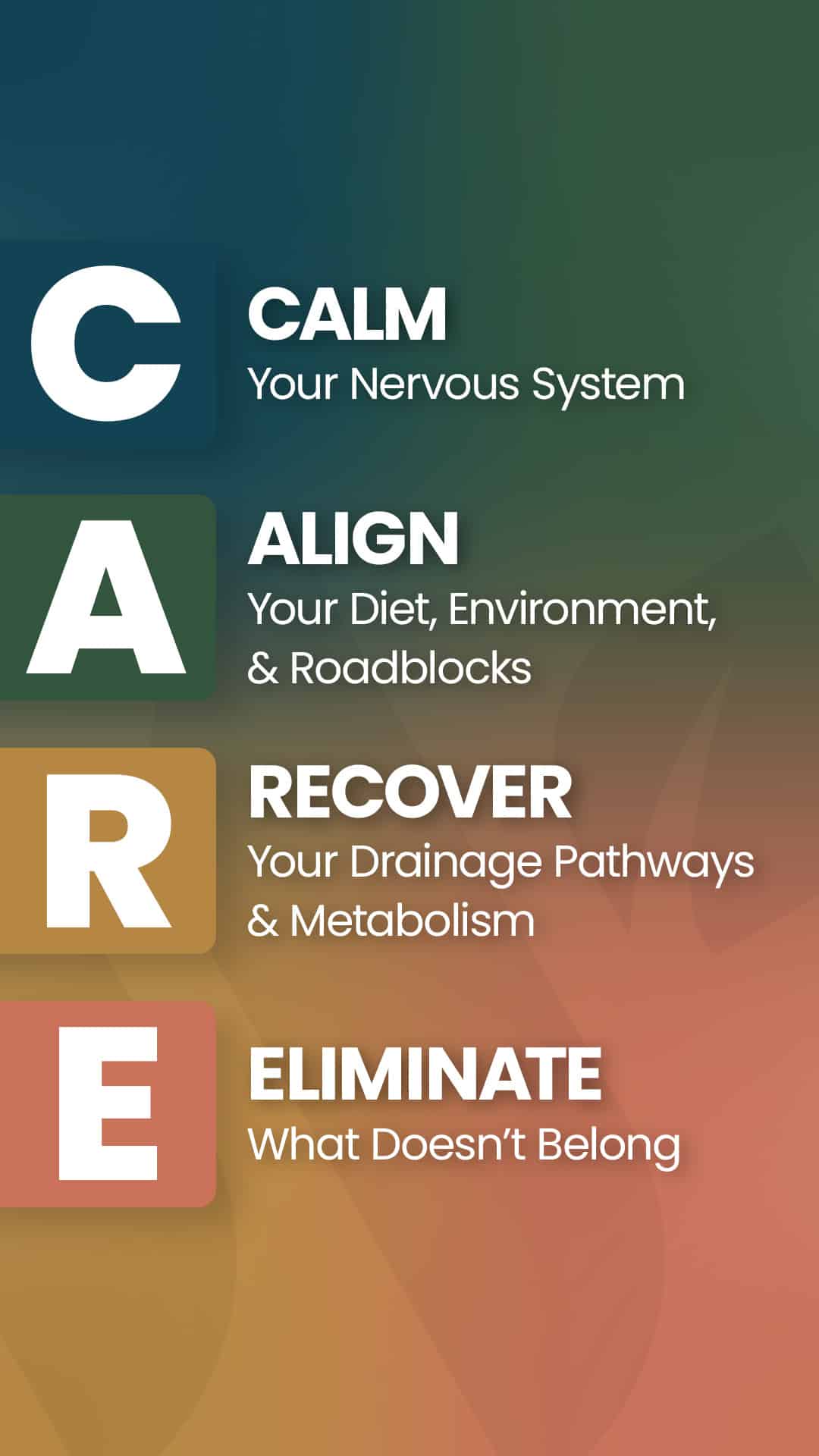Healing Journey Insights & Tools
- Home
- Blog
- Anxiety & Stress
- Hormonal Problems? Could It Be an Estrogen Dominance?
Hormonal Problems? Could It Be an Estrogen Dominance?
Physicians aren’t taught much about hormones or how to treat problems with anything other than prescription pills. I did my own research on the Mirena IUD and how it works. It produces synthetic progesterone in the uterus, which tells the body to quit producing its own. This is problematic because your body has progesterone receptors throughout the body, not just in the uterus. The result is a progesterone deficiency and estrogen dominance. My crazy symptoms were due to unopposed estrogen!
Estrogen vs progesterone and effects on the body
Estrogen increases cellular growth, especially in the uterus during the first part of the menstrual cycle. Estrogen also stimulates the maturation of the egg-containing follicle in the ovary. It is responsible for keeping the cervix the right consistency for possible implantation via the sperm. When it is in the correct ratio to progesterone, it also can lift our moods. If unchecked, cellular growth continues unabated and can lead to cancer.
There are three types of estrogens made in the body-estrone (E1), estradiol (E2), and estriol (E3). It is postulated that E1 is the more dangerous estrogen while E3 is protective. E2 is likely neutral. E1 causes the problem when it builds up in your body. The word “estrogen” is also used collectively to descibe synthetic and naturally occurring compounds that have estrogenic-like effects within the body. Think xenoestrogens from pesticides or plastics, natural phytoestrogens like soy and even some fungi have mycoestrogens. These compounds have the ability to bind to estrogen receptors in our bodies and potentially cause problems depending on our genetics.
What counterbalances estrogen? Progesterone, or pro-gestation hormone! Progesterone’s primary role is to ensure the environment is correct to carry a baby in case of fertilization occurs. Progesterone also balances estrogen and counters its cellular proliferation effects. If fertilization does not take place, the secretion of progesterone decreases, and menstruation occurs 12 to 14 days later under normal conditions. If fertilization does occur, the placenta secretes progesterone during pregnancy and acts to prevent the loss of the pregnancy. Of note, progesterone is made from pregnenolone, which is made from cholesterol. Some people experience derangements in their cholesterol profiles and subsequent hormonal issues because of it.
In normal cycles, estrogen is the dominant hormone in the first half of the menstrual cycle until ovulation. After ovulation, progesterone raises while estrogen falls. Progesterone then decreases and menstruation occurs. The ratio of these two hormones is therefore critical. When I say “estrogen dominance,” it means you have too much estrogen relative to the level of progesterone throughout the cycle. It could also mean having normal estrogen, but too little progesterone. Either way, the imbalance creates the same problems.
Some estimates suggest that approximately 50% of women over 30 have estrogen dominance. Let me assure you this condition is pretty miserable. Endometriosis affects 10% of women, PMS disrupts the lives of nearly 30% of women, uterine fibroids affect 25% of women, and breast cancer strikes 33% women in their lifetimes. We’ve come to believe that PMS and hormonal headaches are fairly normal, but nothing could be further from the truth. In my professional opinion and according to research, estrogen dominance may be the hidden link behind all of these female issues.
Estrogen dominance symptoms:
- Aging skin
- Autoimmune conditions
- Fibrocystic breast tissue/painful, swollen breasts
- Thyroid Dysfunction
- Anxiety/waking up at 3-4 am ruminating about your to-do list for the next day
- Depression
- Copper Excess
- Endometriosis
- Breast Cancer
- Endometrial Cancer
- Abdominal Weight gain
- Fatigue
- Brain Fog
- Gallbladder Disease
- Thinning, Dry Hair
- Hormonal Migraines
- Cystic acne on jawline or chin
- Blood clotting
- Irregular Periods
- Reactivity and Irritability
- Magnesium Deficiency
- Mood Swings
- Painful Periods
- PMS
- Bloating and water retention
- Night Sweats
- Polycystic Ovarian Syndrome
- Frustration, Bossiness, Impatience, Fatigue
Do you recognize these symptoms in yourself? You do not have to fight those symptoms anymore. Many of these hormonal imbalances can be fixed or at the very least, improved. But to improve ourselves, we first need to know how we got here.
So where does an estrogen dominance come from?
Pesticides and herbicides are a significant problem
Many of them are similar in structure to estrogen, therefore, they trick the body. Fruits and veggies with the most pesticide residues are strawberries (contain vinclozolin, a known endocrine disruptor), bell peppers, peaches, apples, apricots, and spinach. Be sure to google “the dirty dozen” and make a mental note to never buy the produce listed unless it is organic. Boxed and prepared foods also contain various preservatives which can disrupt hormones.
Exposure to xenoestrogens in the environment
Most of the personal care products such as lotions, soaps, shampoos, perfumes, and room refreshers are petrochemical compounds that mimic our estrogen. Factory-farmed meats, soaps, furniture, bedding, carpet, and food preservatives also are xenoestrogens. These are endocrine disruptors. Solvents and TPHP found in nail polish are culprits as are xenoestrogens in household cleaning products, glues, paint and all plastics. Even BPA free is not safe. One huge problem is the flushing of birth control pills into the water supply via the urine of women who take them. Since they are fat-soluble, they are not very biodegradable. Hormonal IUDs also wreak havoc on hormones because they skew natural production by confusing the body with synthetic, exogenous hormones.
Emotional stress or trauma
Cholesterol makes pregnenolone, which then converts to progesterone. If needed, progesterone can be converted to cortisol in the body when we are stressed. If stress is chronic or prolonged, then the body will “steal” from the progesterone to support the stress by making cortisol. This leaves a relative estrogen dominance in the body. (Cortisol, the stress hormone, steals from progesterone and throws off the hormonal cascade). Excessive estrogen, in turn, causes insomnia and anxiety, which further taxes the adrenal glands. After a few years in this type of vicious cycle, the adrenal glands become exhausted. This dysfunction leads to blood sugar imbalance, hormonal imbalances, and chronic fatigue.
A lack of ovulation
This occurs more frequently as women age. This usually becomes more frequent after age 35.
Smoking
Tobacco contains not only carcinogens but endocrine disruptors as well as excessive drinking, which can add extra sugar to the diet and stress the adrenal glands.
A sluggish liver
Poor liver function can also cause big problems as its job is to conjugate estrogen to make it water-soluble so the body can excrete it in the urine. It uses glucuronic acid to do this but if the liver is not performing properly, then estrogen will be recycled over and over throughout the body.
This condition can also cause a problem as fat contains an enzyme that converts steroids to estrogen. So the more overweight you are, the higher the risk of too much estrogen.
Factory farmed meats
Nearly 80% of all antibiotics go towards farming-not even for humans. Feeds used contain myriad hormone-disrupting toxins including pesticides, antibiotics, and drugs to combat disease when so many animals are packed closely together. Recombinant growth hormone is also commonplace and can disrupt your hormone levels. If you eat meat, please be sure it is grass-fed, free-range, and even visit the farm if you can.
Nutritional deficiencies such as zinc, B vitamins, and magnesium
Nearly 80% of people are deficient in magnesium, which is a very calming mineral. Zinc stores are depleted as we age and B vitamins are often on a shortage due to a gene mutation called MTHFR, which affects nearly 50% of the population. People with MTHFR cannot activate or methylate B vitamins and therefore have low stores unless they are taking methylB12 or methylcobalamin rather than cyanocobalamin. Keep in mind that a poor diet consisting of processed carbs or fast food also helps deplete magnesium stores. All of these deficiencies can affect hormone levels.
A low-fiber diet
The low fiber in the diet can cause estrogen levels to be higher, while a diet high in fiber results in decreased estrogen levels in the bloodstream. This is because excess estrogen is removed from the body through the bowels. When stool remains in the bowel for a longer time, as in constipation, the estrogen is reabsorbed. Studies have shown that women on a high-fiber diet have lower levels of circulating estrogen. Lower levels of estrogen mean less growth and stimulation of breast tissue, for example, which reduces the risk of breast cancer. This also happens in the uterus too!
How do I know if I have estrogen dominance?
I like the DUTCH test to check for sex hormones like estradiol and progesterone. It checks for a number of different byproducts and metabolites. In my opinion, it is one of the more accurate tests available. However, if the Dutch test isn’t available to you, saliva or serum can work well. I recommend going to have your blood drawn one week after ovulation for women, which is usually the 21-25 days.
I won’t go into the exact calculations. However, in either saliva or blood tests, you want a ratio of 100-500. The basic calculation is a progesterone (x 1000 if it is in ng/ml rather than pg/ml) divided by estrogen which then provides this number. I aim for a ratio of around 200 P/E2. Anything much lower indicates an estrogen dominance and is very common.
Balancing hormones naturally: where do I start?
These symptoms appear to worsen in perimenopause and menopause (from age 35 to 50) because progesterone decreases about 75% compared to estrogen which decreases only around 35% at the time of the change, leaving a relative estrogen dominance.
Balanced hormones are the key to health. They have intimate chemical communication with immunity, sleep hormones like melatonin, and pain receptors. Hormones are anti-aging when kept in the right proportions. So how do you do that? Besides my Hormone Master, what else can you do to reverse the effects of declining hormones?
Liver cleanse
As discussed above, a sluggish liver will recycle estrogen over and over in the body. Herbs like milk thistle, NAC, bilberry, dandelion, fennel and barberry are excellent for liver health. Foods that help circulate bile and keep the liver running efficiently are mostly vegetables or roots that grow underground and include ginger, carrots, beets and burdock root.
De-stress
I can’t say it enough. Stress is a killer! It can cause heart attacks and wreck hormone levels. Meditation, deep belly breathing, yoga, and mindfulness can all help lower stress…and even blood pressure!

Sleep
if you aren’t sleeping, or your days and nights are confused, then mark my words…this is affecting your hormone production. Lack of sleep can alter hormones and skewed hormones can also affect the quality of sleep. It can become a vicious cycle. Please focus on good sleep and plenty of it. No blue lights from the computer, tv or phone once its nighttime, practice only sleeping or having sex in the bedroom, treat hormones that may be causing you nighttime anxiety, treat pain that keeps you awake.
Diet
If you are eating processed carbs or tons of sugar daily, you really need a good bacterial or parasite to cleanse. These cravings are not coming from you, but from pathogens that feed off these sources in your gut. They send powerful signals up the vagus nerve to tell your brain that you want SUGAR, but it is not really YOUR craving! You can eradicate these unhealthy eating habits by changing the bad bacteria colonies in your gut to healthy bacteria that live in harmony with your immunity and hormones. It will be nearly impossible to keep hormone levels appropriately ratioed without dietary and lifestyle changes. Cut out dairy, factory-farmed meats, processed carbs or snack foods from bags or boxes, bread, white pasta, and refined sugar. Eat only whole foods that grow organically from the earth and that your ancestors would recognize as real food.
Personal care products
Switch out all products like lotions, shampoos, conditioners, soaps, body washes, tampons, hair products, and deodorants to organic, all-natural ingredients. Many of the preservatives and stabilizers contained in these products contain known endocrine disruptors. For example, the FDA has known since the 1970’s that Triclosan in soaps like Dial, disrupts hormones. They have just recently removed it from personal care products. This is why you need to be your own best doctor!
Lose weight
It is imperative to keep healthy and lose weight. As fat converts estrogen, the more overweight you are, the higher the risk of estrogen dominance.
Avoid soy products-Soy is estrogenic meaning it can contribute to an unwanted estrogen dominance if you are already leaning in that direction.
Regular bowel movements
again if you are on narcotics or even antibiotics, this can decrease the release of toxins by constipating you or disrupting your delicate gut balance. Both of these can increase the levels of estrogen.
Ditch the birth control pills and IUD
The World Health Organization has classified the pill as carcinogenic. Synthetic hormones also disrupt the natural and innate production of your body’s hormones. Why produce them if you’re taking them?

Inflammation
Yes, its true, systemic, or body-wide inflammation from a poor diet or sedentary lifestyle leads to pain and can distort proper hormone levels.
Add in Omega 3 Fatty Acids which help to temper inflammation and pain.
Evening primrose oil, DIM, Vitex or Chasteberry, probiotics, and black cohosh. Hormones are synthesized from cholesterol and vitamin D is also intimately involved. Often I see that these two will be abnormal when our hormones are skewed. So it is useful to have these labs checked with a hormonal panel including estradiol, progesterone, DHEA and free testosterone.
FINALLY….if none of these achieve the desired results with hormones, my last and final step is to consider bioidentical hormone replacement with progesterone pills or cream. The pills seem to improve the quality of sleep more efficiently. I try to avoid this as much as possible. I think it’s best to be as natural with the body as possible. I do believe bioidentical hormones are safe and an excellent last choice for those women and men who’s hormones aren’t easily balanced otherwise.
Now you are empowered with knowledge that you can use to BE YOUR OWN BEST DOCTOR!
Real Progress From
Real People
FREE CARE Plan eBOOK by Dr. Jess, MD.
This system mirrors Dr. Jess MD's steps with patients in her virtual clinic. It’s not a diagnosis, it’s a roadmap; a step-by-step process designed to help people restore function, remove roadblocks, and rebuild resilience.

